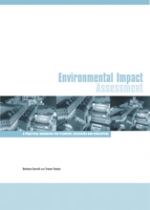Tab Article
Environmental Impact Assessment (EIA), the procedure that ensures that the likely effects of new development on the environment are taken into account, has become a crucial part of the development process. An understanding of EIA procedures is an increasing necessity for all those involved in this process.
A unique addition to the literature on this subject, Environmental Impact Assessment Handbook is an approachable and practical guide, with many illustrated explanations and examples, written from the practitioner’s perspective. The handbook approach has been designed with cross-referencing and checklists which makes the guide a valuable introductory text as well as a useful reference tool for the EIA practitioner.
This handbook aims to:
- present the requirements of EIA according to the UK EIA Regulations in a readily usable and practical way
- inspire and share experience towards good EIA practice by a practical handbook format illustrated with case studies
- inform and guide the use of EIA early and effectively in the development design and land use planning processes
- demonstrate the advantages of improvements in EIA practice to facilitate better informed planning decisions
It includes a review of the procedures, an introduction to addressing environmental topics in EIA, and the approach to assessing a range of development types.
Environmental Impact Assessment Handbook will be essential reading for all planners, designers, engineers, architects, surveyors and developers, and all other professionals working as project managers on development proposals. It will also be an invaluable resource for students and community groups.


